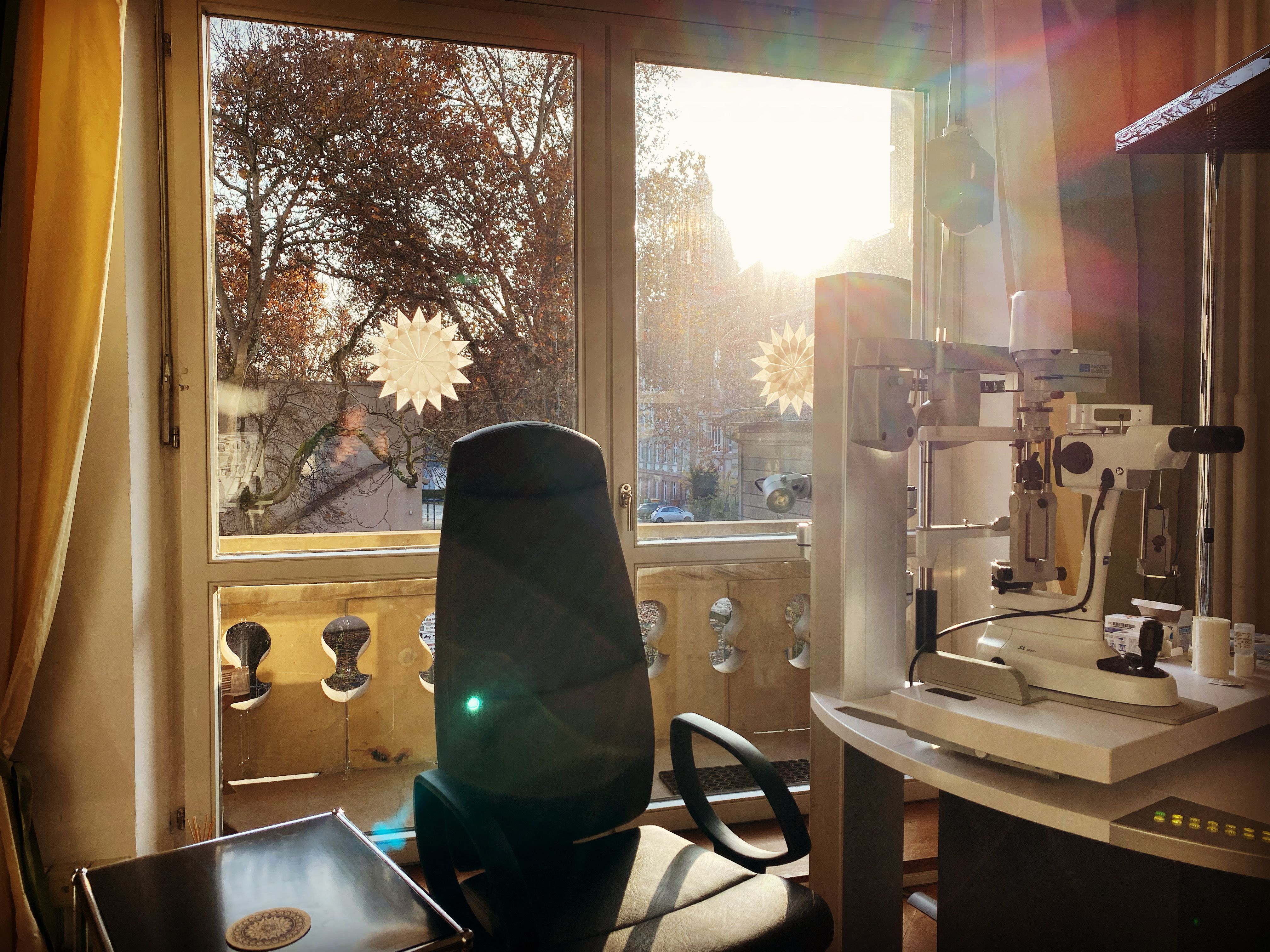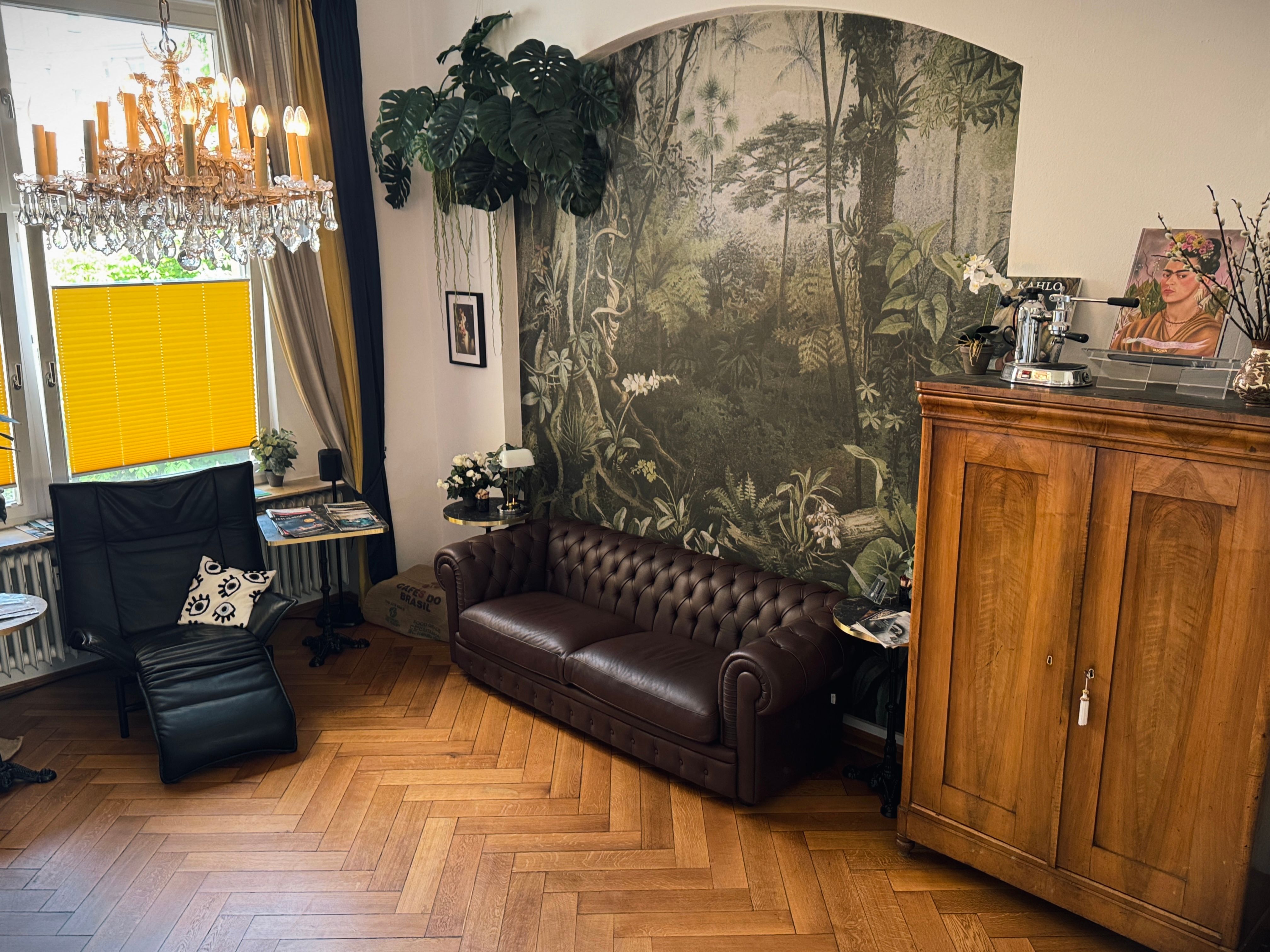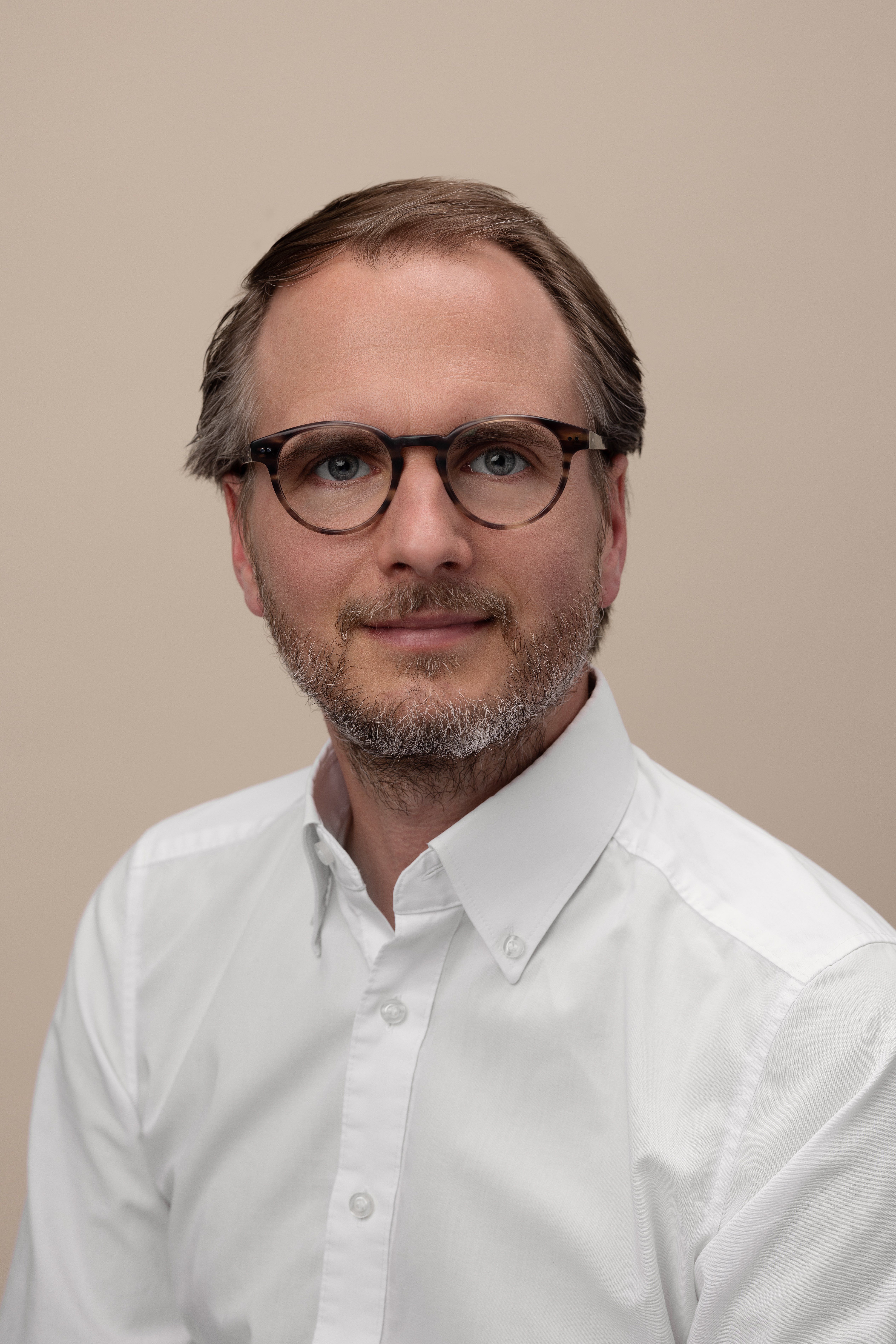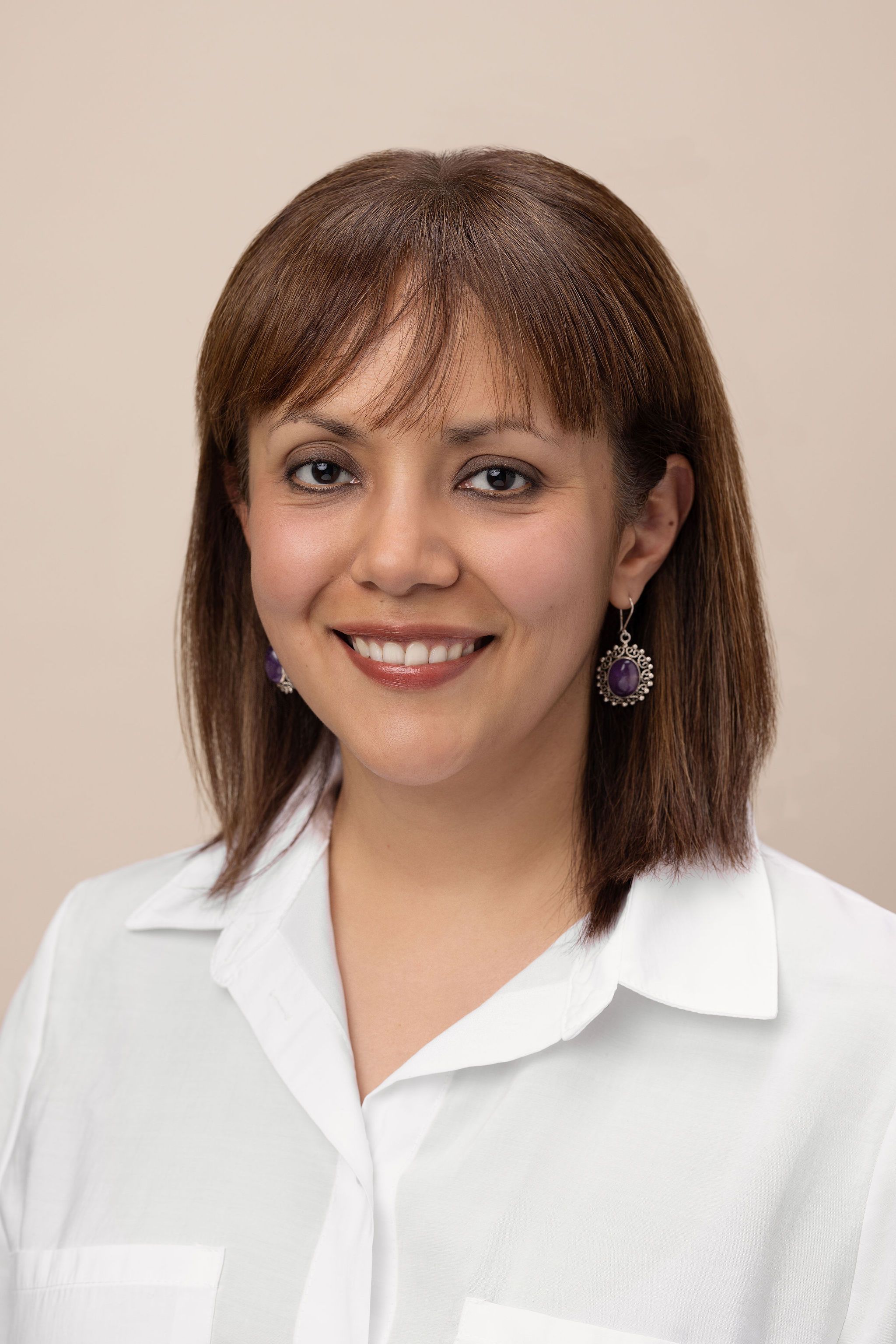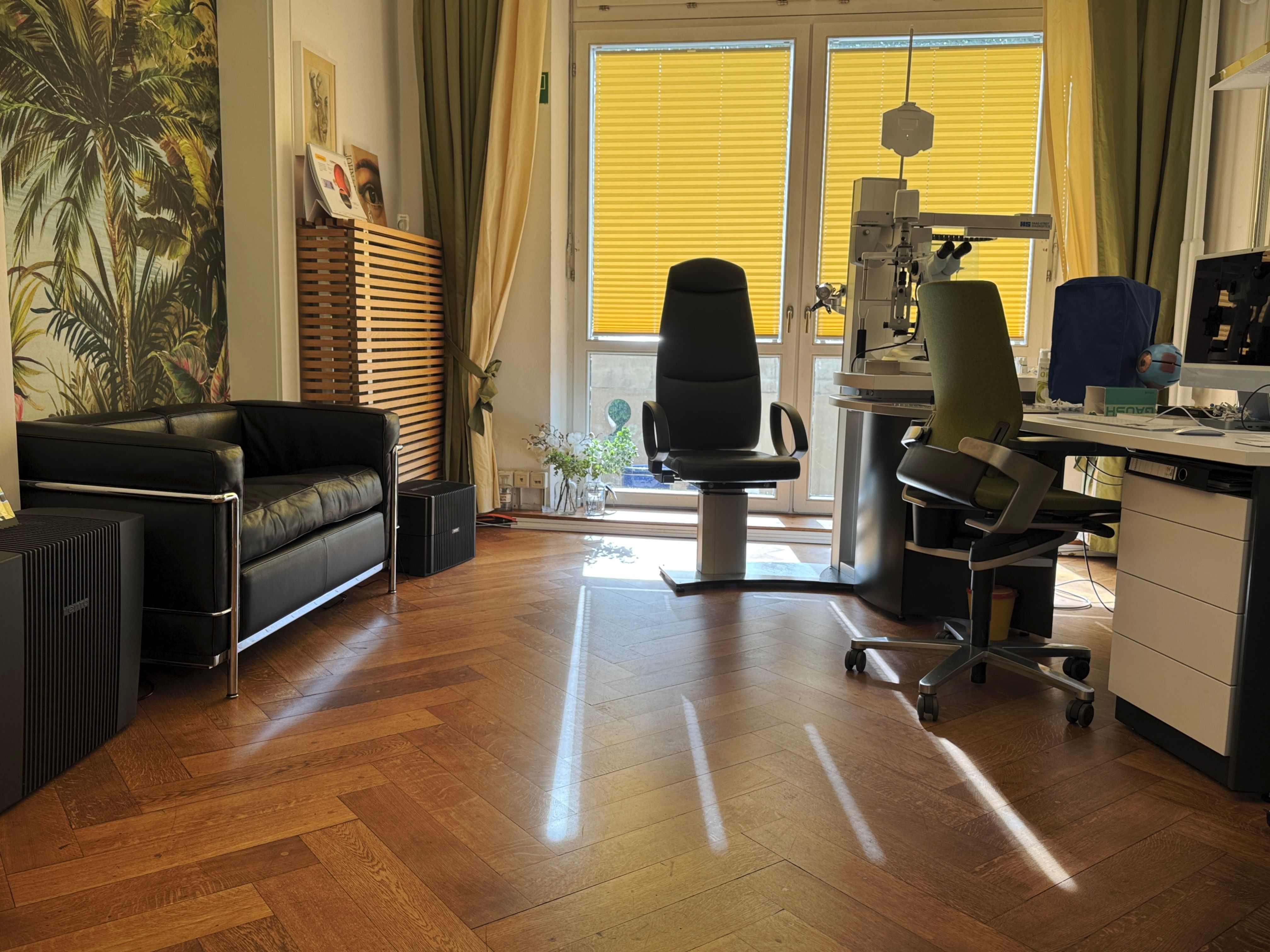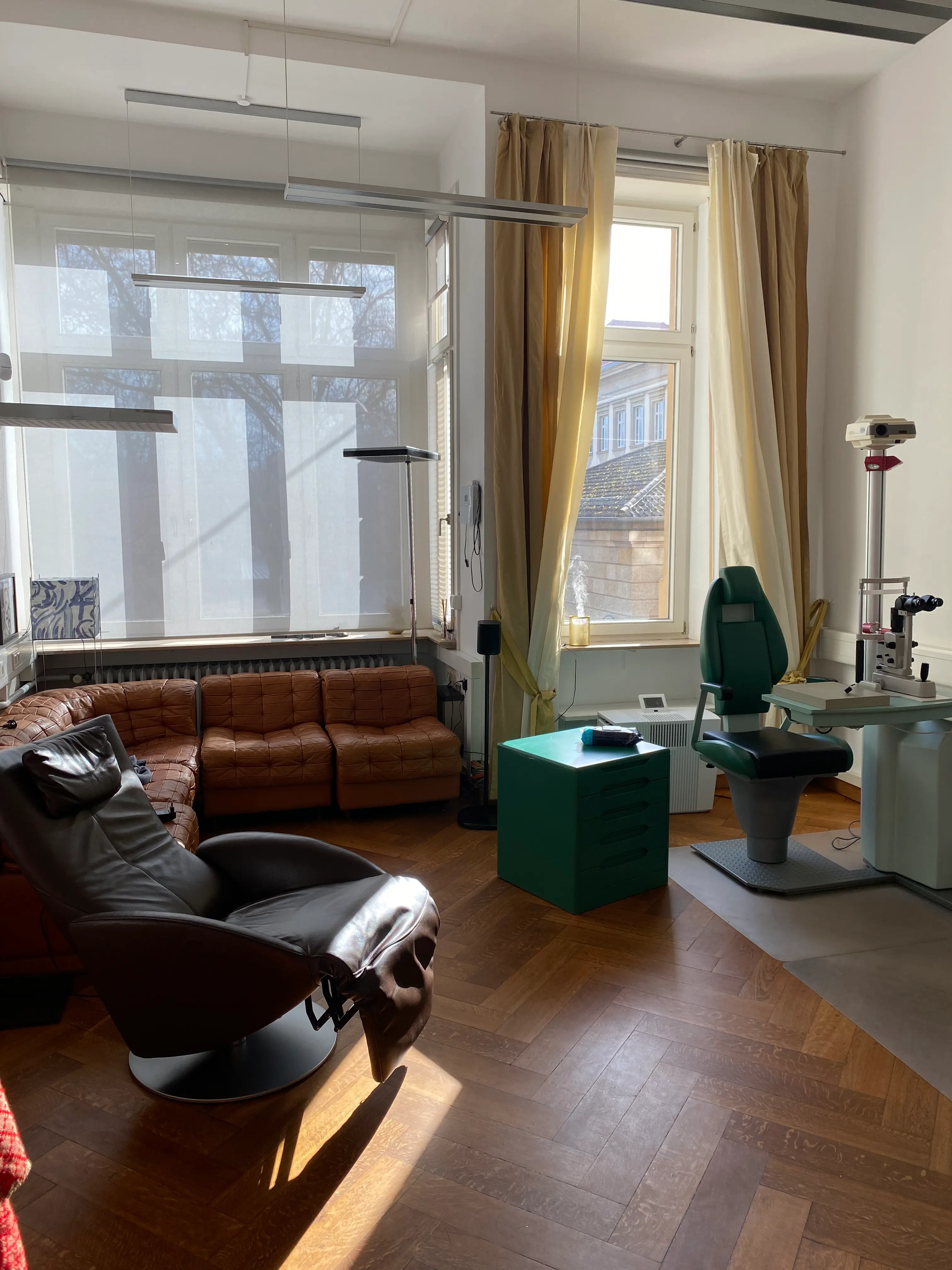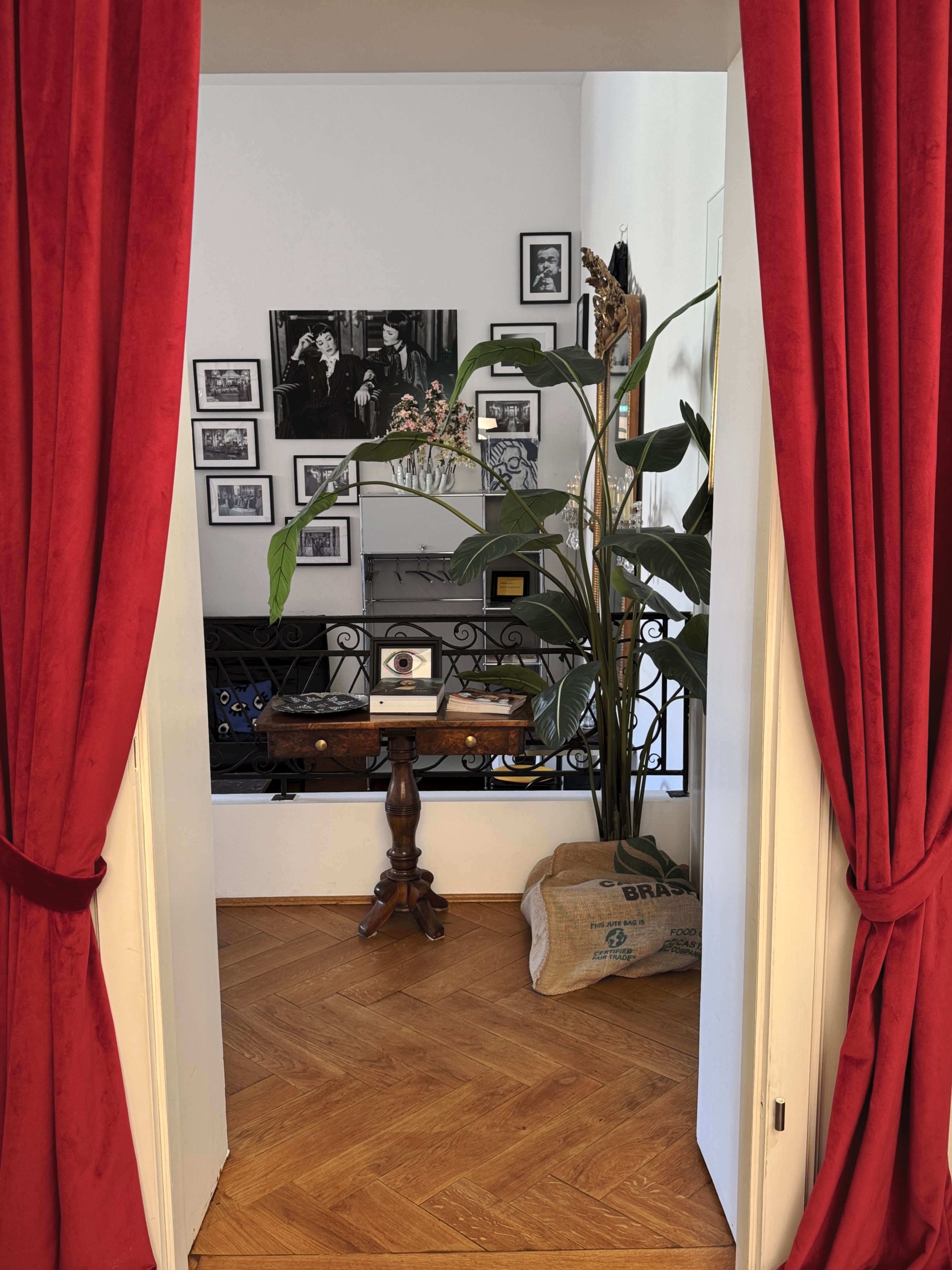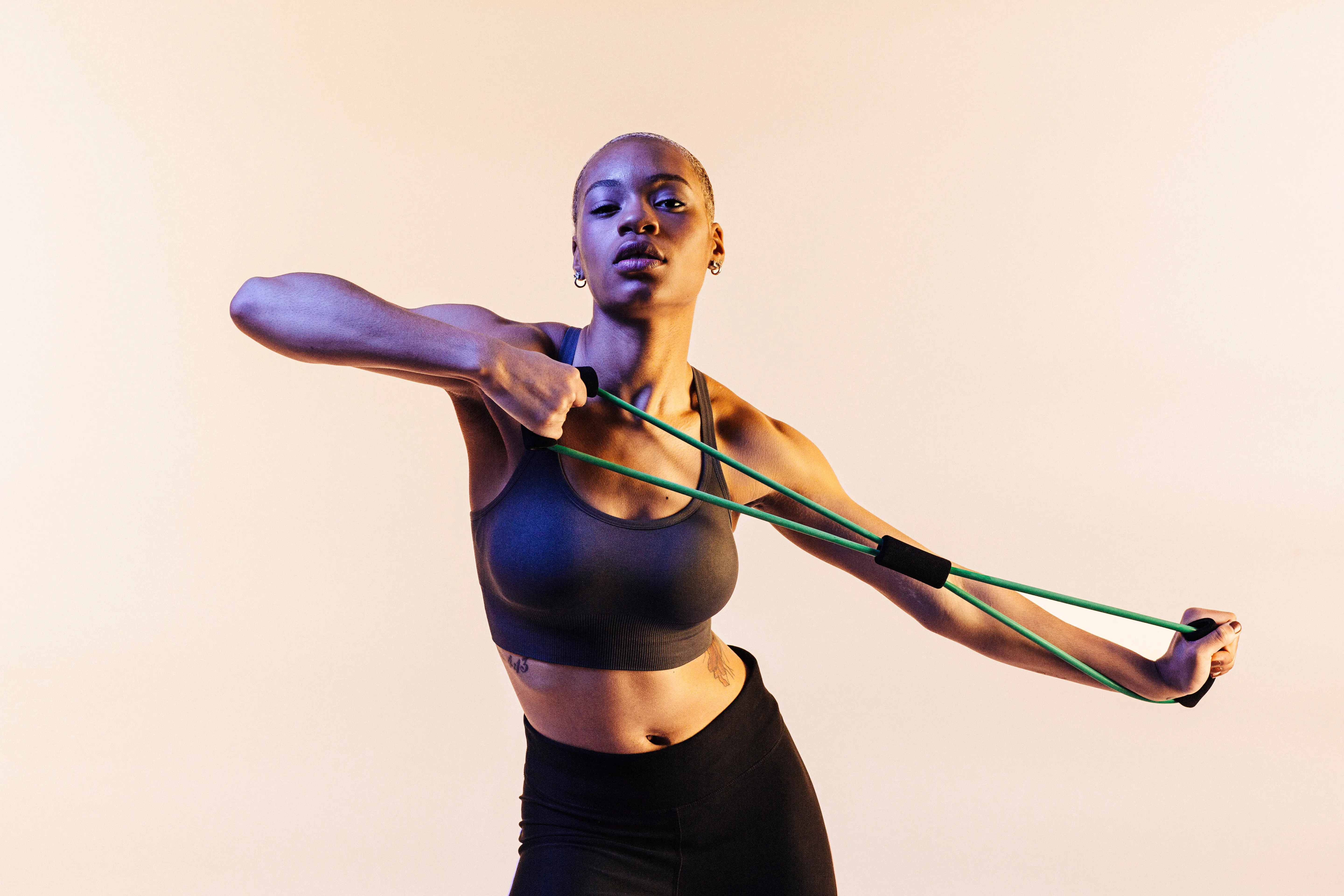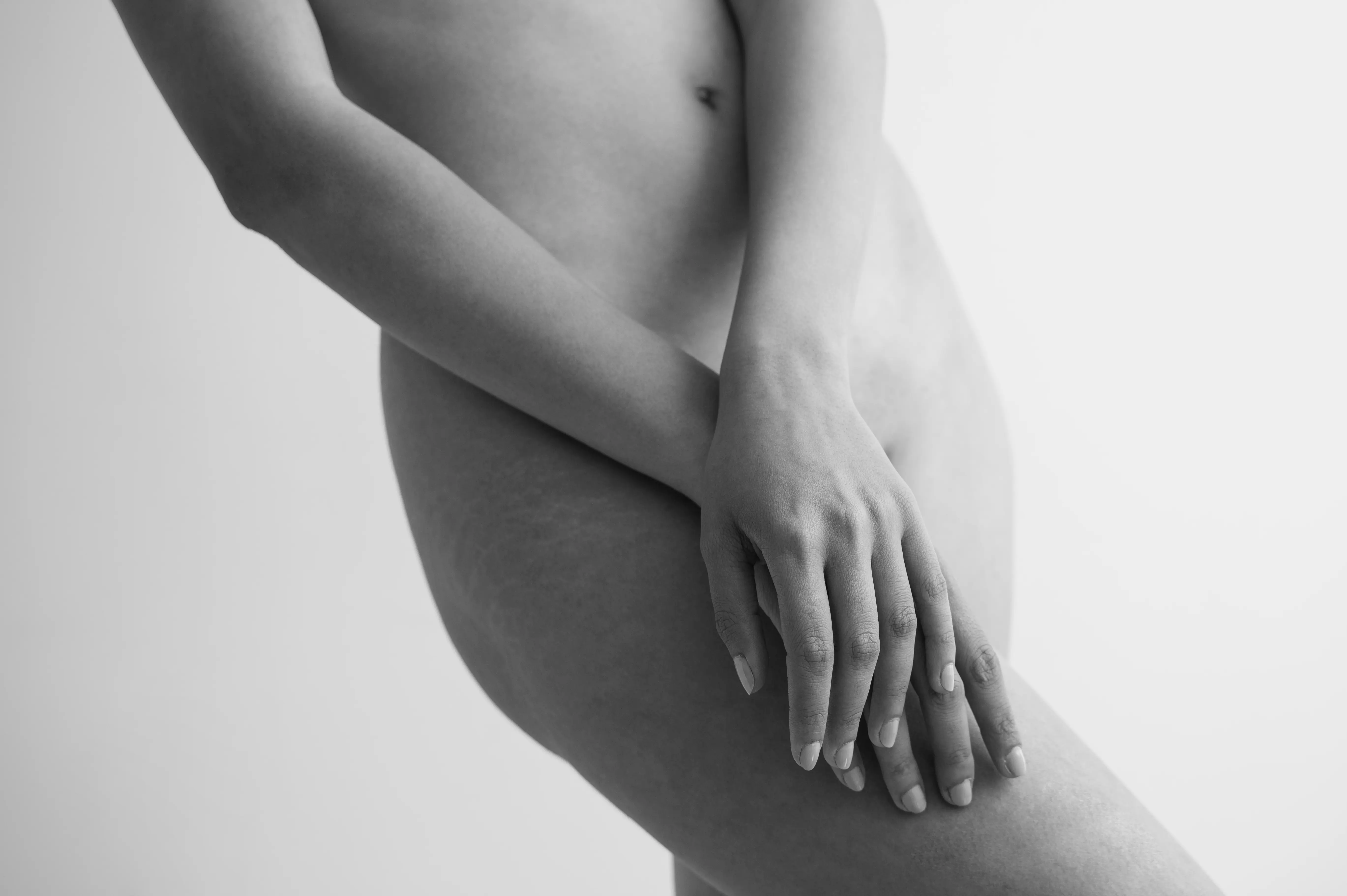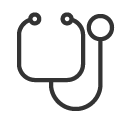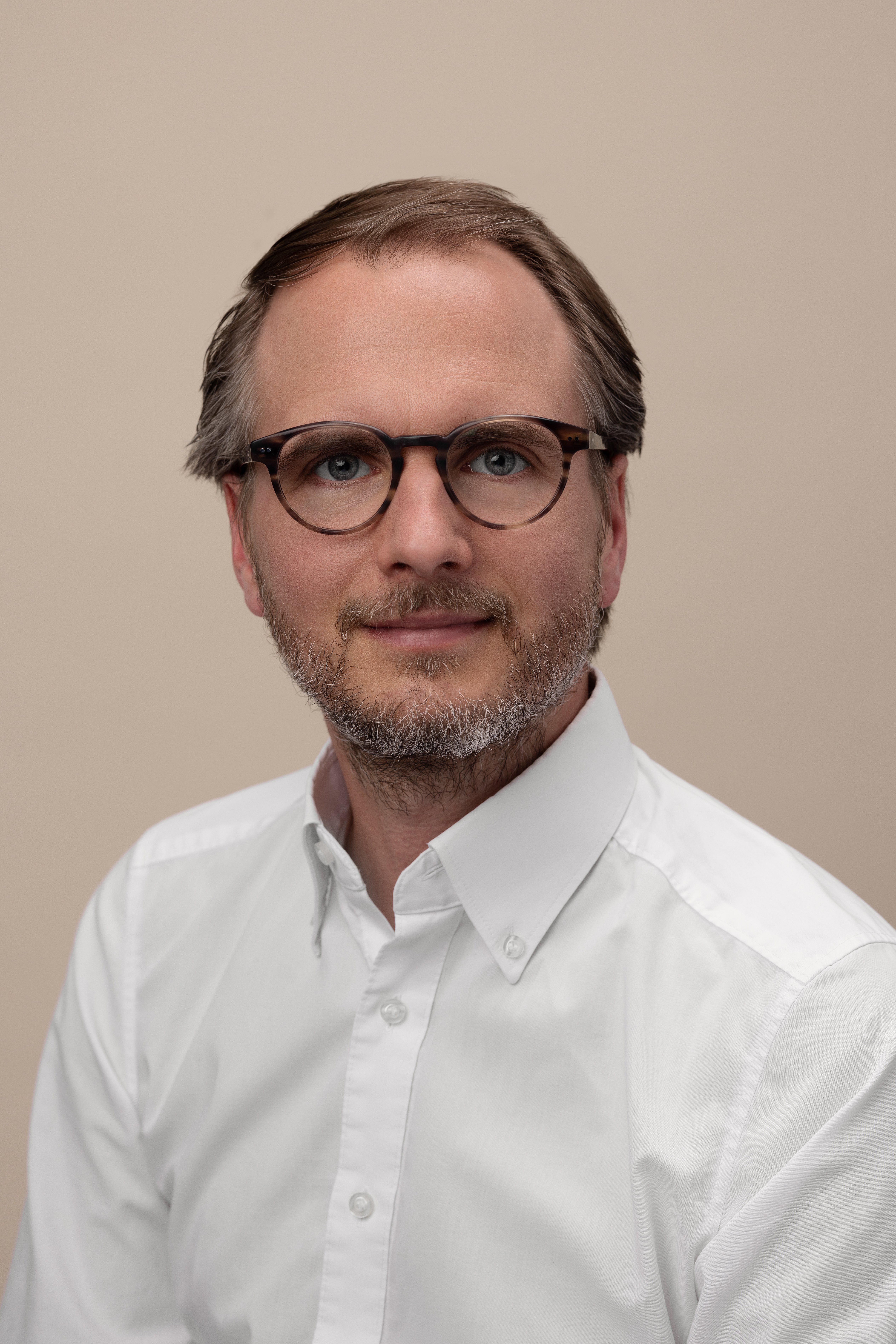
© PMC
- Mannheim & Umgebung
- Modern Ophthalmology
Dr. med. Dr. med. univ. Florian Niklas Auerbach, FEBO, MHBA
Privatpraxis für individuelle Augendiagnostik
Services
Mannheim's Oststadt is considered the epitome of the extraordinary. Magnificent villas, proximity to the Neckar, and the world-famous Luisenpark give the district its exclusive reputation. Another reason: the practice of Dr. Florian Auerbach and his wife Jessica Ariadna Carmona Hernandez. Since 2022, the two ophthalmologists have been practicing in a stylish Art Nouveau building – with diagnostics and treatment at university level.
Who opens the heavy gate for the first time - once a carriage entrance - on Stresemannstraße and climbs the stairs to the first floor on the left, enters an impressive 200 square meters: five-meter-high ceilings, herringbone parquet, and wide double doors. The waiting area, formerly a theater room, today appears homely and personal thanks to a jungle wallpaper specially designed for the practice, chandeliers and photos of the couple's professional stations - from India and Mexico to Vienna and Paris. A coffee from the portafilter machine shortens the waiting time, although the exact organization usually only allows enough time for an espresso - the attention will soon be on the doctor anyway. "I try to personally greet my patients in the consultation room before the appointment if possible," says Dr. Florian Auerbach. The individual meeting on an equal footing is just as important to the 42-year-old as a relaxed, communicative atmosphere.
The doctor is concerned with more than classical treatments and prevention. "Seeing is fundamental for us humans - it is our main source of information, before all other senses," emphasizes the internationally experienced expert, who worked for many years as a senior physician at the University Hospital Heidelberg and has carried out several thousand procedures - from vitreous body injections to cataractand eyelid surgeries. "There is nothing I haven't already seen in ophthalmology," summarizes Dr. Auerbach, who has deliberately taken a different path in his private practice, far from the clinical routine.
"Seeing is fundamental for us humans – it is our main source of information, before all other senses."
Dr. Florian Niklas Auerbach, MD, FEBO, MHBA
Ophthalmology at Eye Level
In his own practice, which Florian Auerbach runs together with his wife, the Cornea- and cataract specialist Jessica Ariadna Carmona Hernandez, preventive examinations are the focus. The most modern technology is available for this, which can otherwise only be found in university hospitals: an OCT (optical coherence tomography), which provides high-resolution, detailed sectional images of the fundus – for the precise assessment of the retina, the optic nerve and other eye tissues as well as for the detection of diabetes-related retinopathy. Another special device is the keratograph for the analysis of dry eyes, a focus of Dr. Auerbach. The measurement of the lipid layer of the tear film provides information about an unfortunately underdiagnosed eye problem: meibomian gland degeneration and keratoconjunctivitis sicca, a disorder of tear film production.
"Those affected have red, burning or itchy eyes. In the long term, vision can be impaired – and glasses do not provide any remedy because the cause has not been identified and eliminated." For precise diagnostics, the ultra-widefield retinal imaging system Clarus is available, which can precisely display even peripheral areas of the retina and detect diseases at an early stage. The diagnostic spectrum is supplemented by kerato- and autorefractometers as well as by topography and wavefront measurements, with which individually adapted glasses or contact lenses can be determined. A modern slit lamp allows the recording of videos and photos for seamless documentation and visualization. Other systems enable the representation of meibomian glands, changes in the cornea and fluctuations in intraocular pressure, which is essential for the early detection of glaucoma, cataracts or macular degeneration is.
The results of cutting-edge imaging analyses are always discussed in detail and vividly by Dr. Auerbach directly after the examination. He benefits not only from his trained eye as an experienced amateur photographer but also from his expertise as a medical illustrator: he uniquely combines visual and media levels and can explain complex content in an understandable way even for laypeople. He has received multiple awards for his graphic and visual work in professional journals and scientific publications. His affinity for the visual was already evident during his training at the Medical University of Innsbruck, the Charité in Berlin as well as in Vienna, Prague, Alicante, Dhulikhel (Nepal), and most recently at the University Eye Clinic in Heidelberg.
“You can recognize many diseases in the eyes because the retina is the only organ where you can directly see arteries and veins upon inspection, for example, without ultrasound."
Dr. med. Dr. med. univ. Florian Niklas Auerbach, FEBO, MHBA
His wife Jessica Carmona completed her specialist training in Mexico in 2009 and then added the German and European specialization in Freiburg and Paris. As befits passionate ophthalmologists, the couple met at a congress of the American Society of Cataract and Refractive Surgery in San Francisco. Together with two excellently trained MTAs, they now form a team that not only examines patients but also sees them as people. For Dr. Florian Auerbach and Jessica Carmona, eyes are more than a mirror of the soul—they are a body’s own laboratory: “One can recognize many diseases in the eyes because the retina is the only organ where arteries and veins can be seen directly on view and, for example, without ultrasound. Therefore, even without vision problems, one should routinely go to an ophthalmologist every two years. Prevention and early detection are key.”
Well connected in the region, the ophthalmologist creates a detailed plan for clarification if necessary and refers his patients to specialized colleagues in cases of systemic diseases—such as cholesterol metabolism, high blood pressure, neurological symptoms, or copper deposits in the cornea. In the spirit of the principle: Four eyes see more than two.
Additional services
Prevention/screening
Regular eye check-ups are crucial for early detection of diseases. They are especially important for:
· Glaucoma screening (Green Star)
· Macular degeneration screening
· Diabetic retinopathy check
Experts recommend regular eye examinations starting at the age of 40, even if there are no symptoms2.
Second opinion
A second opinion might be useful if:
· A serious diagnosis has been made
· An operation is recommended
· There are doubts about the initial diagnosis
Dry eye
Dry eye is a common condition caused by insufficient tear production or poor tear quality. Symptoms can include burning, itching, redness, and a feeling of a foreign body. Causes include:
· Environmental factors such as dry air or screen work
· Hormonal changes
· Medication intake
· Aging processes
Treatment options include artificial tears, special eye sprays, eyelid hygiene, and in severe cases, medical interventions.
